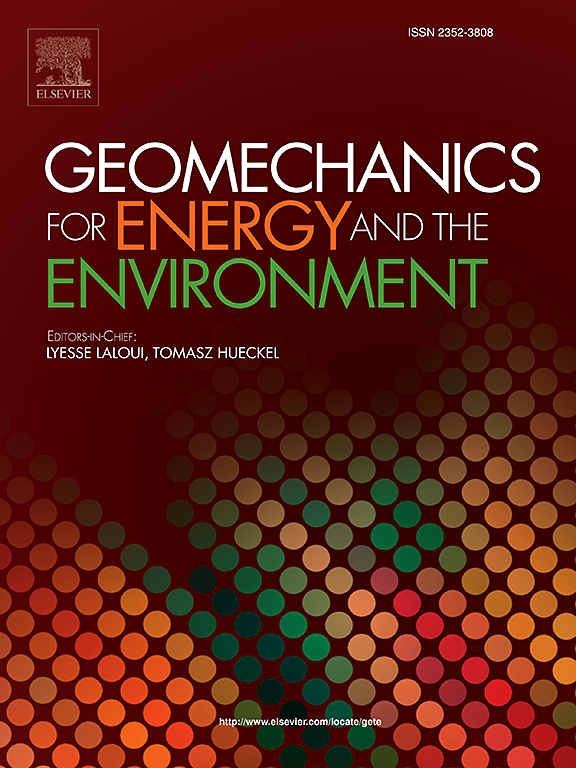Influence of mechanical strength on gas migration through bentonite: Numerical analysis from laboratory to field scale
IF 3.3
2区 工程技术
Q3 ENERGY & FUELS
引用次数: 0
Abstract
Understanding the gas movement phenomenon within the deep geological repository is essential for assessing the disposal system’s long-term stability. The primary gas transport mechanism through the bentonite is dilatancy-controlled flow, which differs from gas flow in general porous media. This flow is characterized by gas movement through microcracks created under relatively high gas pressure conditions, and the intrinsic permeability, air-entry pressure, and mechanical strength of the medium change due to the generation and propagation of these microcracks. Therefore, dilatancy-controlled flow cannot be simulated using the classical two-phase flow modeling technique. This study constructed the HMD (two-phase hydraulic-mechanical-damage) numerical model by combining a damage model to simulate material degradation and the resulting change in intrinsic permeability with a classical two-phase flow model. In addition, the numerical model was tested against a 1D laboratory gas injection test investing gas flow mechanisms in the buffer, and a sensitivity analysis was performed on tensile strength, a key factor in the damage model for gas movement phenomenon. In the validation study, the proposed model successfully simulated the key features observed in the test: rapid stress and pressure increase trends, changes in intrinsic permeability due to damage, and the resulting flow rate. In addition, the effect of heterogeneity on the strength characteristics of each material and interfaces between materials was analyzed through field-scale test simulations, and the applicability of the model to upscaling analysis was examined. The study of heterogeneity effects confirmed that incorporating the strength characteristics of interfaces accurately simulates the gas flow path observed in actual tests. However, the model overestimated the gas flow before the gas breakthrough and underestimated the evolution of the damaged area within the buffer. Therefore, additional research on relative permeability and mechanical constitutive models is needed to improve the reliability of the current model.
求助全文
约1分钟内获得全文
求助全文
来源期刊

Geomechanics for Energy and the Environment
Earth and Planetary Sciences-Geotechnical Engineering and Engineering Geology
CiteScore
5.90
自引率
11.80%
发文量
87
期刊介绍:
The aim of the Journal is to publish research results of the highest quality and of lasting importance on the subject of geomechanics, with the focus on applications to geological energy production and storage, and the interaction of soils and rocks with the natural and engineered environment. Special attention is given to concepts and developments of new energy geotechnologies that comprise intrinsic mechanisms protecting the environment against a potential engineering induced damage, hence warranting sustainable usage of energy resources.
The scope of the journal is broad, including fundamental concepts in geomechanics and mechanics of porous media, the experiments and analysis of novel phenomena and applications. Of special interest are issues resulting from coupling of particular physics, chemistry and biology of external forcings, as well as of pore fluid/gas and minerals to the solid mechanics of the medium skeleton and pore fluid mechanics. The multi-scale and inter-scale interactions between the phenomena and the behavior representations are also of particular interest. Contributions to general theoretical approach to these issues, but of potential reference to geomechanics in its context of energy and the environment are also most welcome.
 求助内容:
求助内容: 应助结果提醒方式:
应助结果提醒方式:


